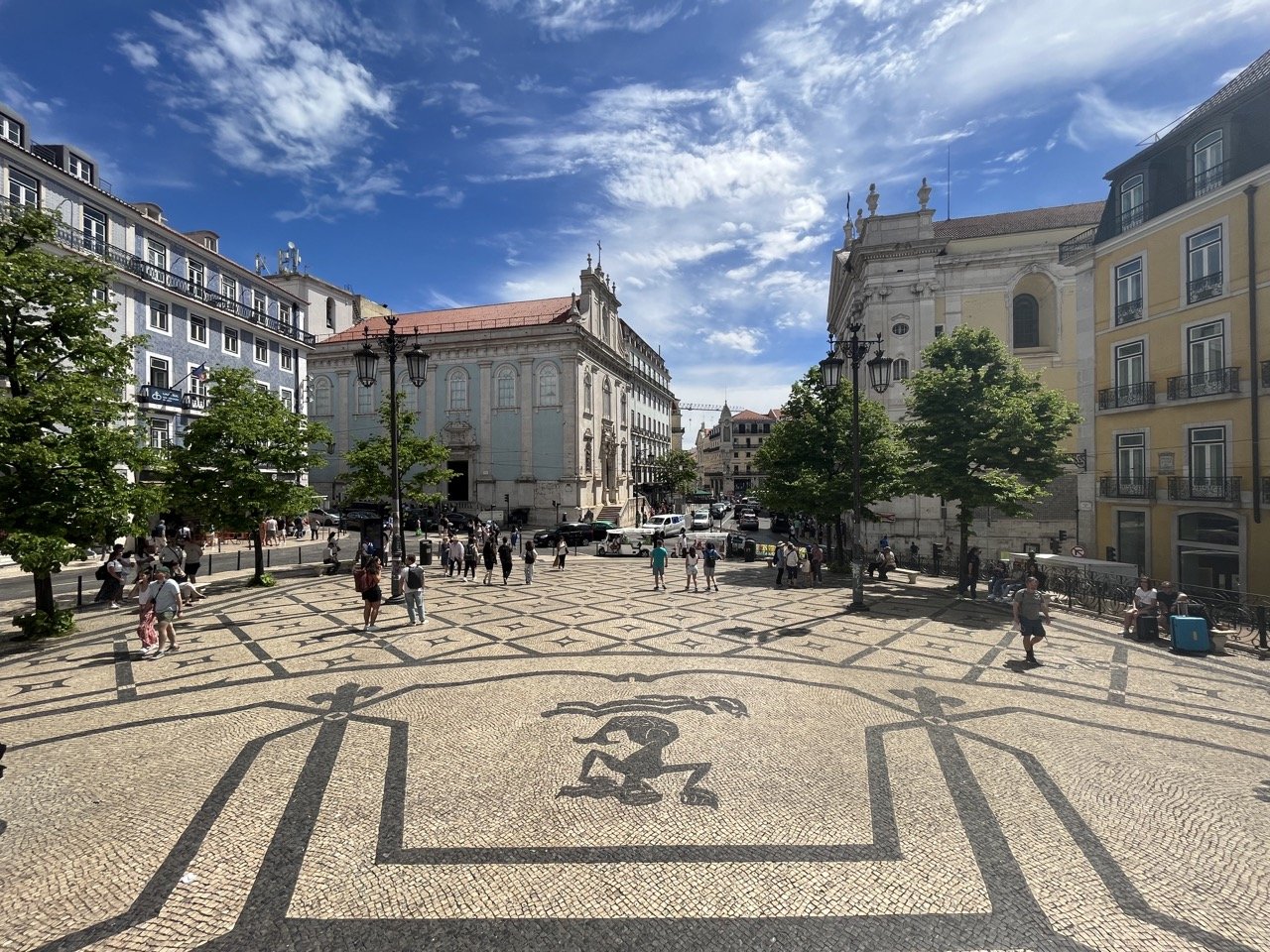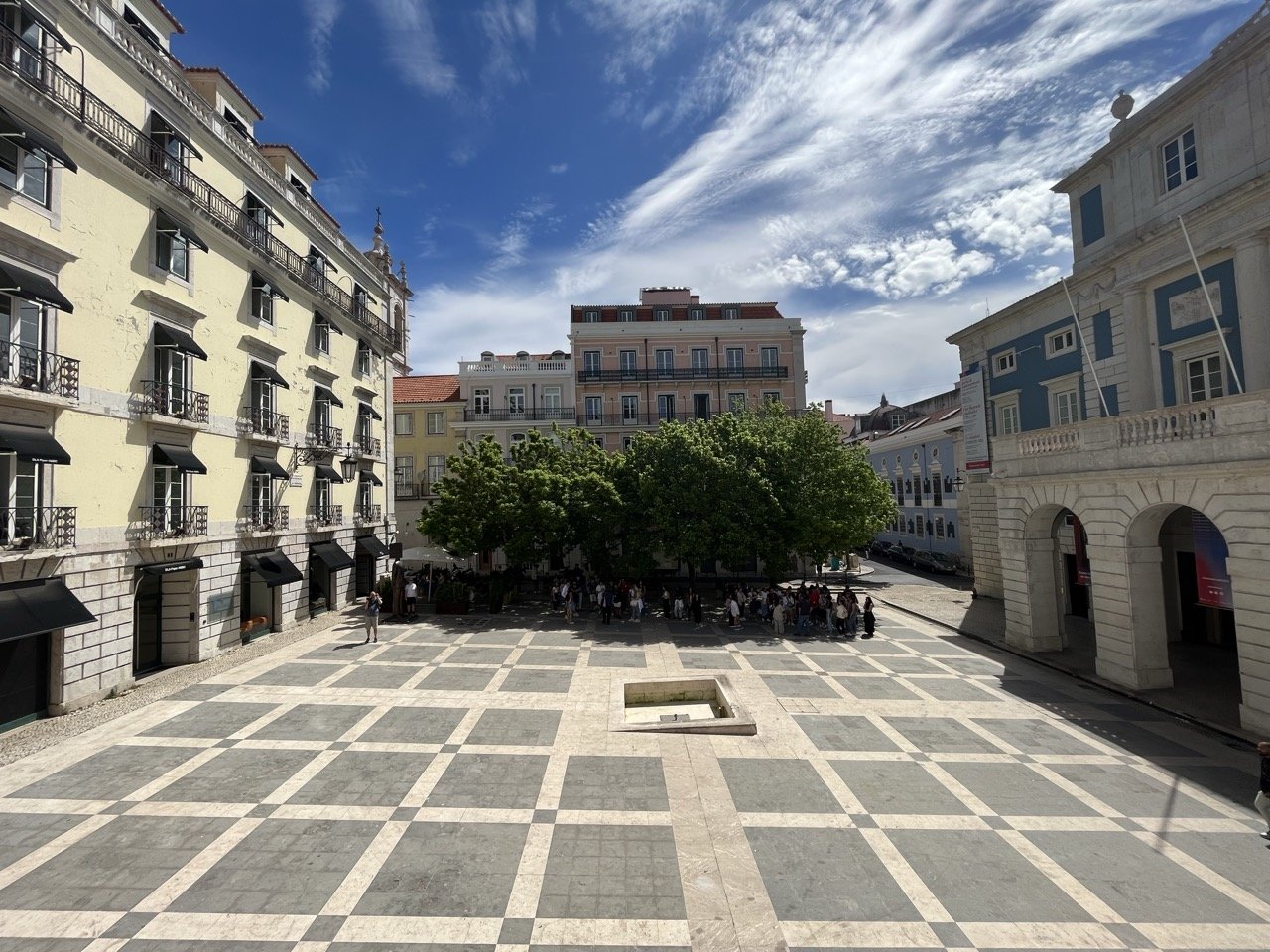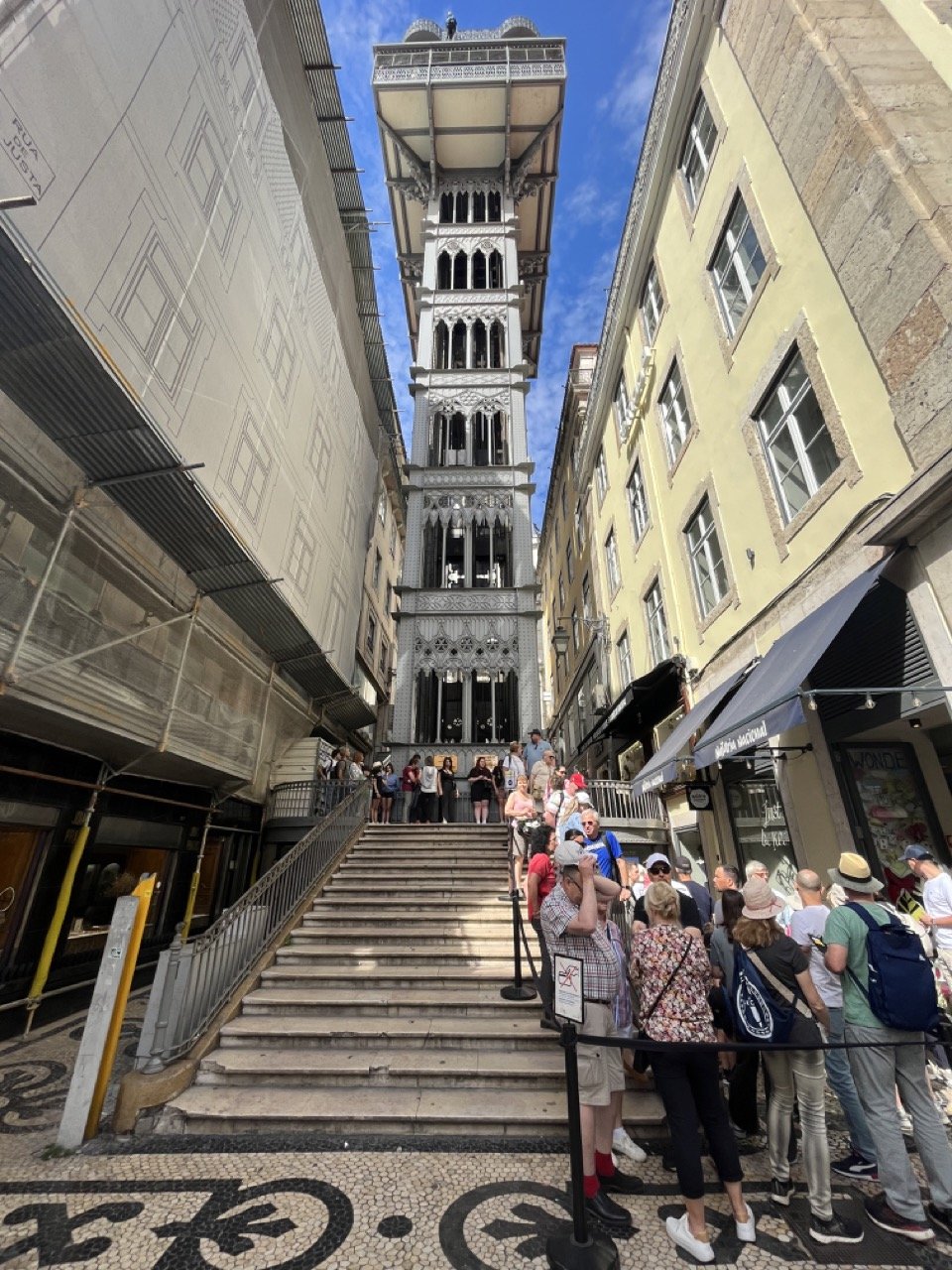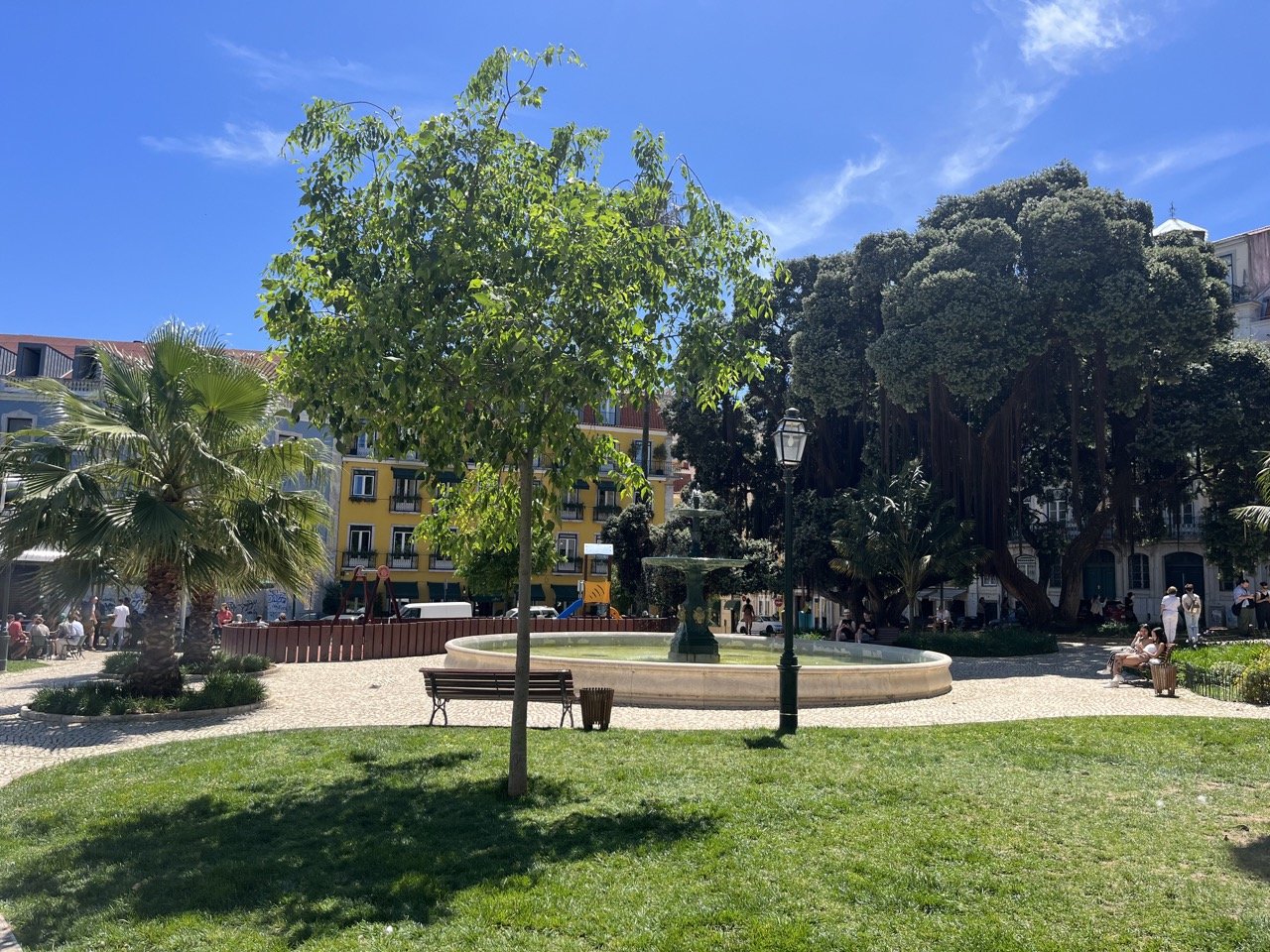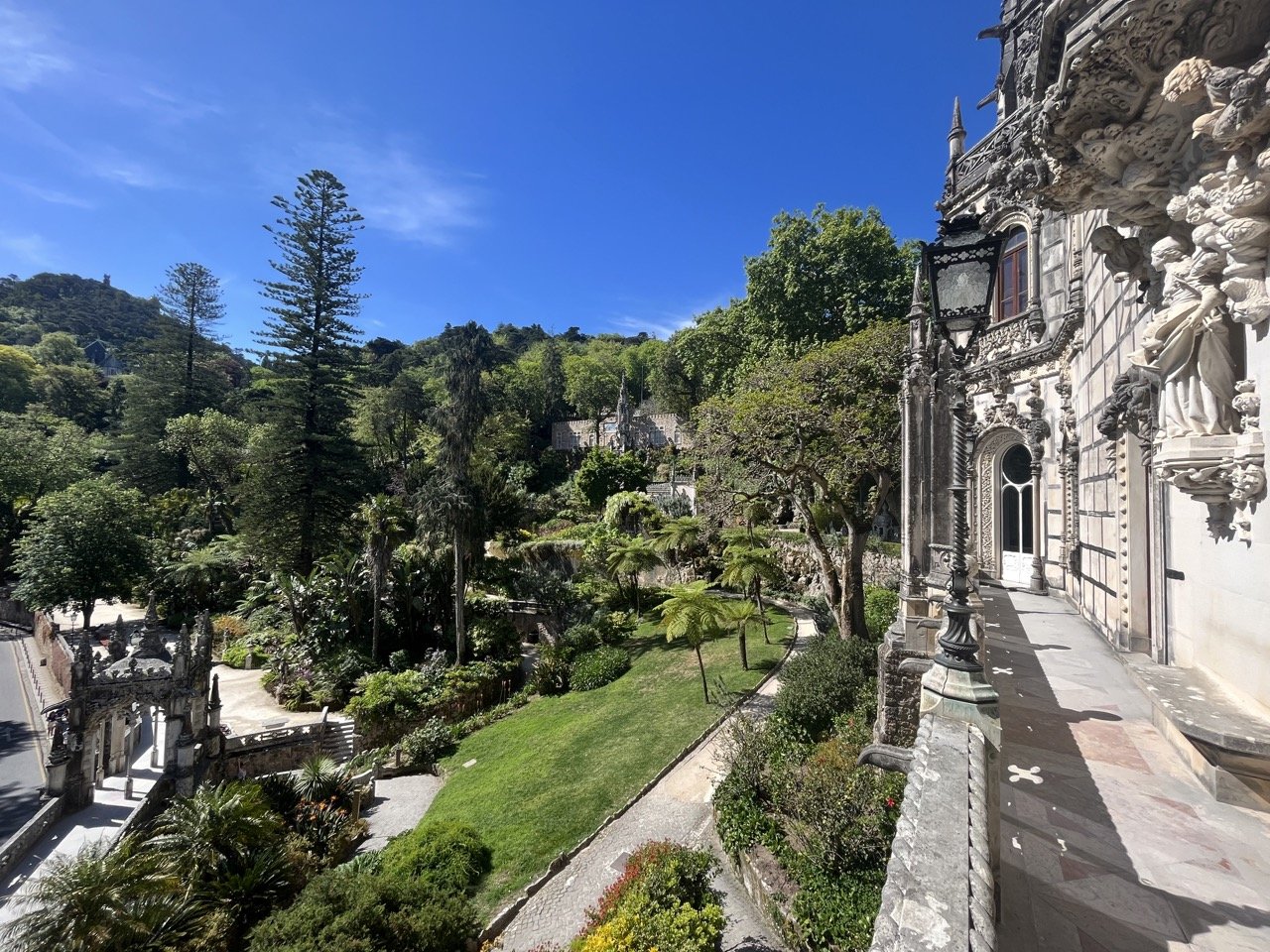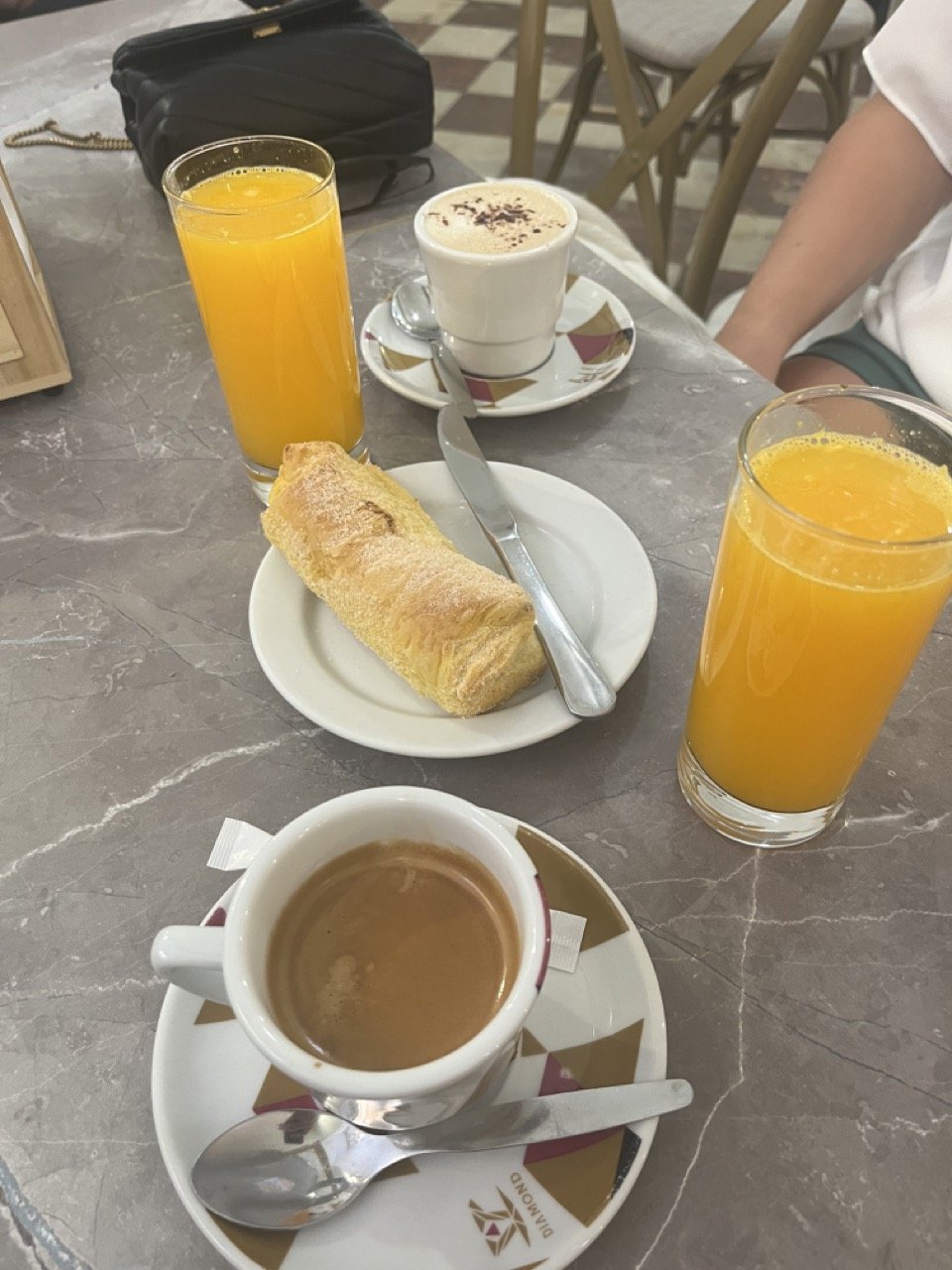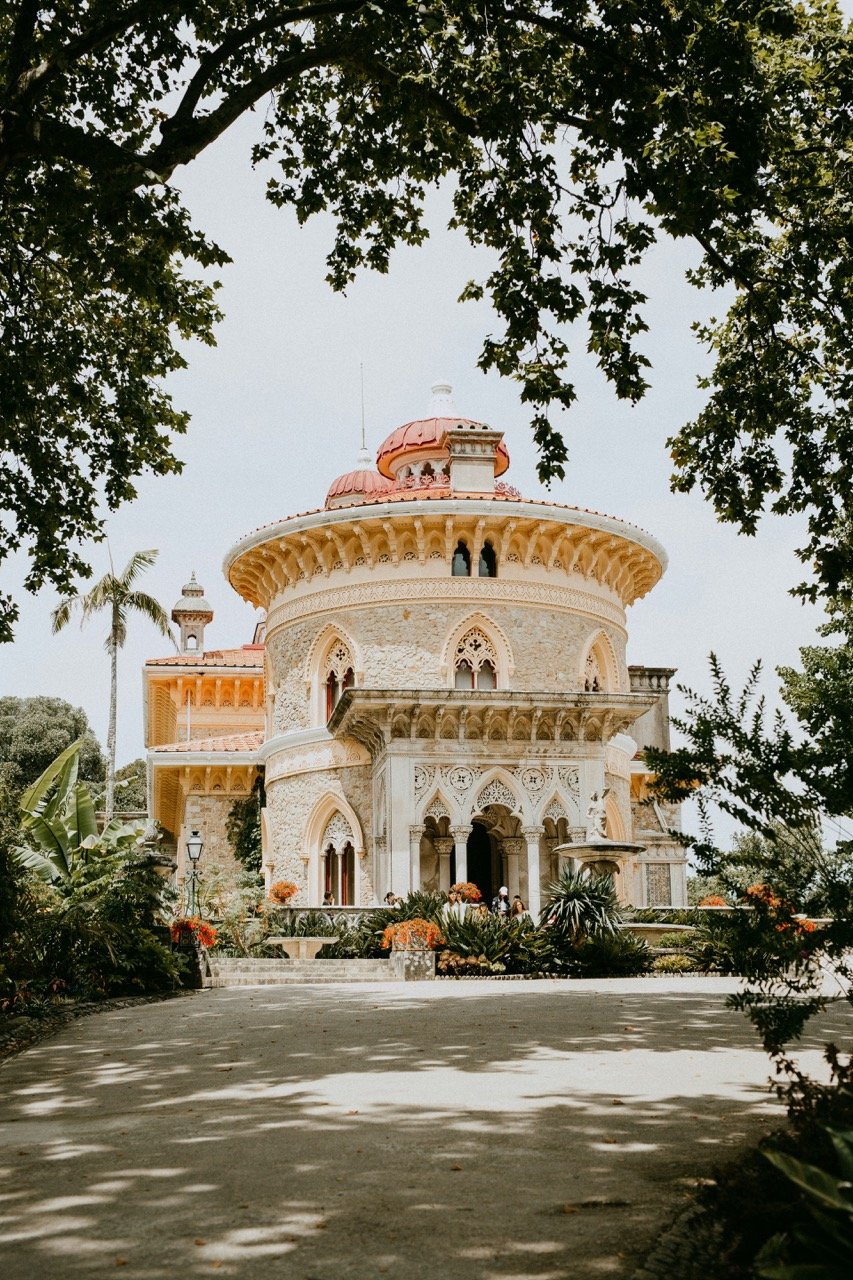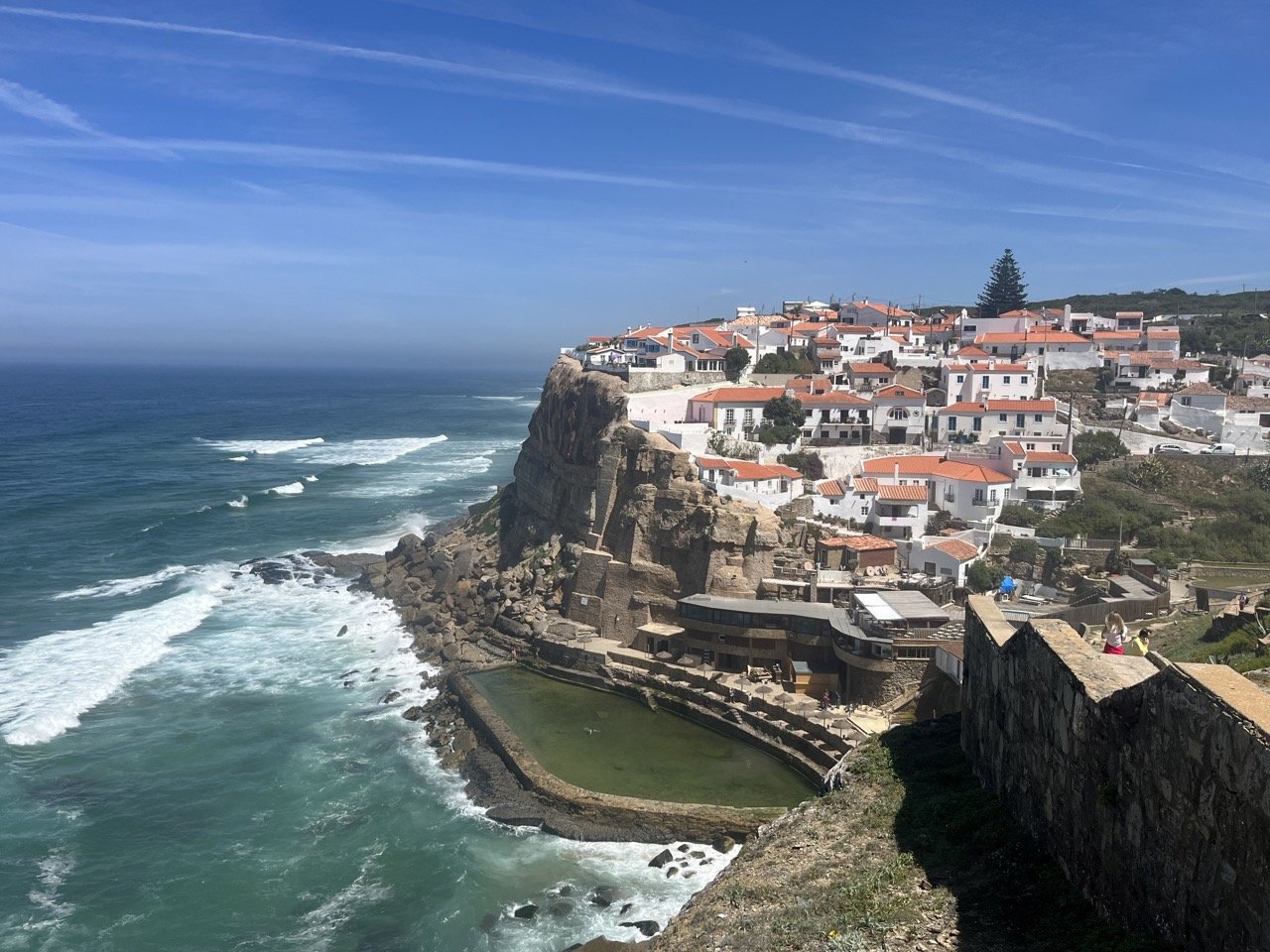How to Spend 3 Days in Lisbon - A Local’s Itinerary
Please note: some of the links in this article are affiliate links. If you book using one of them, we’ll earn a small commission. All of our info is free to read and free of ads, so we appreciate it!
Lisbon, and Portugal in general, is having a bit of a moment right now. Not only are more visitors than ever coming, but digital nomads and expats from all over the world are also choosing it as a base. It's a wonderful place, so there's good reason to come, but the city is changing both dramatically and rapidly. So, I really recommend that you come now before it changes too much!
The capital city of a once-great maritime empire, Lisbon is a treasure trove of architecture, culture, and history. There is so much to explore here that I think 3 days is really a bit short. My city deserves more time, but if 3 days is what you've got, I'm here to help you make the most of it!
So, with this itinerary I've included 2 full days of sightseeing in Lisbon city proper and then used the 3rd day for a full-day trip out to Sintra and Cascais. I've also included a "bonus” 4th day with options for day trips to some other great places near to Lisbon. If Sintra sounds too touristy for you, you could consider one of those other day trips as an alternative for your 3rd day.
Enough from me though - let's get into the plan!
And for more advice on planning your visit to Lisbon, check out some of our other guides:
Table of Contents
Lisbon planning cheatsheet
 Plan your itinerary with expert advice
Plan your itinerary with expert advice
- Book a Portugal travel consultation with a local expert
 My favorite hotels in Lisbon
My favorite hotels in Lisbon
- One Palácio da Anunciada - 5-star luxury off Avenida da Liberdade. $350/night
- Palácio das Especiarias - Old World charm & elegance in Chiado. $200/night
- Pousada de Alfama - modern little hotel in the heart of Alfama. $200/night
- Alegria Boutique Hotel - bright and airy rooms in Principe Real. $175/night
- Hotel Lis Baixa - small, but cheerful rooms for a bargain in Baixa. $150/night
- Hotel White Lisboa - excellent value with a pool in Avenidas Novas. $140/night
 Guided tours and activities
Guided tours and activities
 How to get around
How to get around
- Car rentals with DiscoverCars
- Metro and bus/tram routes with MetroLisboa and Carris
- Train tickets from Comboios de Portugal
- Long distance buses at Redes Expressos
- Taxis & rideshares with Uber and Bolt


Is 3 days enough time?
For most visitors, 3 days is enough time for a solid introduction to Lisbon. This gives you enough time to see the all of the major sights and attractions within the city center and Belém area, explore a few pleasant less touristy neighborhoods, visit a couple of museums, maybe take a cruise on the Tagus River, and do a day trip to somewhere like Sintra.
While I think 3 days is good, especially for those planning longer trips around Portugal, know that you could also spend lots more time here. It's an incredibly historic city that's filled with hidden treasures, pleasant neighborhoods to explore, great museums and cultural centers, leafy parks, grand boulevards, and fantastic cafes, restaurants, and bars. And nearby places like Fatima, Alcobaça, Óbidos, Évora, Arrabida park, and the Troia peninsula are also all doable as day trips from the city, so there is lots to keep you occupied.
If using Lisbon as your base to explore a bit of central Portugal and the greater metro region, there's plenty to keep you entertained for up to a week.
How to get around
You don't need a car to visit Lisbon. In fact, traffic can become really chaotic at rush hour, and parking is scarce and mostly paid (and quite expensive!), so having a car when in the city is not at all convenient.
Walking
Lisbon is quite compact, so if you're in good shape, I suggest walking most places, as the distances are never too far and exploring the city by foot is the only way you'll feel the charm of the old streets, see all the typical stores, and bump into the locals.
Metro and tram
For longer distances, the city has a good metro system that takes you quickly, easily, and cheaply, to all the main neighborhoods and tourist attractions, so getting around is a breeze.
And when you can't get somewhere by metro, you can always take the bus or the traditional streetcars. Tram 28 is the most touristic, as it retains its old appearance and passes through the historic neighborhoods of Graça, Alfama, and Bairro Alto. There are many others.
You can check tram and bus routes on Carris and metro lines via Metro de Lisboa.
Tuk-tuk
For those with mobility limitations (and anyone who just doesn’t feel like walking or using transit), hiring a tuk-tuk is also an option. Because they are smaller, Tuk-tuks have an easier time getting around than cars do, and you’ll also get some explanations from the driver about the places you're passing through. You can book a tuk-tuk online - several companies offer the service - or try to catch one directly at Praça do Rossio or Praça do Comércio. However, be prepared to pay quite a lot, especially in the summer. A tuk-tuk can cost up to 80 euros for a 1.5-hour ride.
The Santa Justa Elevator in Baixa/Largo do Carmo, the Calçada da Glória, Rua da Bica, and Calçada do Lavra elevators/funiculars are also very helpful for some of the steeper climbs.
Taxis/ride shares
Regarding taxis, there are regular licensed cabs all over Lisbon, and apps like Uber and Bolt also work. Compared to other parts of Europe or North America, cabs in Portugal are very cheap.
A few tips
To get to Belém, take Tram 15 or the train from the Cais do Sodré station, getting off at the Belém stop.
To visit Cascais, you can take the same train that runs to Belém (but not the tram) all the way to the end of the line.
To visit Sintra, you’ll need to take a 40-minute train ride from Rossio Station. While Sintra is easy to get to, keep in mind that if you want to visit other interesting destinations nearby, it’s really best to rent a car and make a proper day trip of it.
Where to stay
Lisbon is truly a city of neighborhoods and they’re all quite distinct from each other, each with their own appeal.
I don’t think there’s a perfect answer to the question of where to stay as it really depends on your interests and the type of traveler you are. Anyone who tells you “this is the right neighborhood for 99% of travelers” is either a tourist themselves or just someone who doesn’t know the city very well.
Even so, if you just want a quick answer, I think that most travelers will do ok by choosing a hotel in any of the following 4 neighborhoods:
Principe Real
Baixa and Chiado
Avenidas Novas
Alfama
If you want a detailed guide on choosing the right neighborhood, have a look at our article on where to stay in Lisbon.
For a quick selection of good hotels across my recommended neighborhoods, check out the map below:


Itinerary overview
This 3-day itinerary is intended for travelers coming to Lisbon for the first time. It’s designed to help you understand the city, see the main sights, explore some great neighborhoods, and eat some terrific food. It also includes a day trip out to Sintra and has a list of other potential day trips in case you have a 4th day in the city (or just aren’t interested in seeing Sintra).
Day 1
Explore the Belém neighborhood in the morning, with the Jerónimos Monastery and the Torre de Belém as the chief sights. In the afternoon, you’ll have a riverside lunch and then explore the neighborhoods of Baixa and Chiado as well as much of Lisbon’s “downtown”. You finish the day with a sunset cruise on the Tejo river, then dinner, and perhaps a night out in Cais do Sodre.
Day 2
Today is all about historic Lisbon, focusing on the Alfama and Mouraria neighborhoods along with São Jorge castle, some iconic churches, and a few terrific viewpoints. In the late afternoon and evening, you have time to get a little off the beaten path, enjoying a wander in the neighborhoods of Principe Real or Graça. Finish the day with a Fado show in Bairro Alto.
Day 3
Your last day will be spent outside the city, taking a day trip to the palaces of Sintra in the morning before visiting fantastic Cabo da Roca in the afternoon and finishing the day with dinner in Cascais and a visit to one of Estoril’s lovely casinos.
Day 1 - From Belém to downtown Lisbon
The history of Lisbon and the story of the Portuguese Discoveries are told in the Belém area and the city's downtown. It was from Belém that the Portuguese maritime expeditions set out to explore the world, while downtown served as the city's administrative and commercial center, where wealth obtained abroad was brought and traded.
As you tour the city on this first day, with the Tejo River always by your side, you'll experience how Lisbon has evolved without ever losing sight of its heritage.
The Torre de Belém
Morning - Belém & its monuments
On your first day in Lisbon, grab a tram or uber and head out to the Belém neighborhood on the western edge of town. This is where you'll find two of the city's most iconic monuments: the Jerónimos Monastery and Belem Tower.
I recommend visiting early in the morning because anytime after 10:00 am the crowds start to get intense as big buses arrive, often carrying thousands of people coming off of cruise ships.
Mosteiro dos Jerónimos
Your first stop today is the Mosteiro dos Jerónimos in the Belém neighborhood. Get there from central Lisbon by catching Tram 15 at Cais do Sodré station around 9:00 a.m. or even a little earlier. The journey to Belém takes around 20 minutes and the tram stop is directly in front of the monastery.
Considered a UNESCO World Heritage Site, this is one of Portugal's most visited monuments. To avoid the long queues that usually form, especially during the summer, you'll want to be there when it opens (9:30 a.m.). Buying your ticket online in advance can also save you some waiting time.
The Jerónimos Monastery was built in the 16th century by order of King Manuel I and is located where the ships set sail during the Age of Discovery.
Start your visit with the Cloister and its incredible Manueline architecture. This is one of the most beautiful areas of the monastery, and the details in the columns and arcades are extraordinary.
Then move on to the Church of Santa Maria de Belém, where you'll find the tombs of two iconic figures in Portuguese history: Vasco da Gama, the navigator who discovered the sea route to India, and Luís de Camões, one of the most famous Portuguese poets, author of "Os Lusíadas," an epic work that tells of the Portuguese achievements during the Age of Discovery.
Before leaving the site, be sure to spend a few minutes admiring the South Portal of the building, which is full of details and representations of the saints and monarchs who lived during this historic period.
Mosteiro dos Jerónimos - go early to avoid those lines
Have a Pastel de Nata at Pastéis de Belém bakery
It should be mid-morning by now, and this is the perfect opportunity to try Lisbon’s famous pastel de nata pastry at the iconic Pastéis de Belém bakery. You'll find the famous 1837 factory only 200 meters from the monastery. It produces the best custard tarts you'll ever taste. Be prepared for a bit of a queue at the door, but it will be worth it.
And don't bother asking for the recipe because it's still a closely guarded secret. Believe me, I've tried!
Once you've gotten your tasty little treats, instead of staying inside the pastry shop or by the door, do as I usually do and take your “pastéis” and go and enjoy them in the Praça do Império gardens, which is just across the street.
Waiting in line for Pastel de Nata
The line continues…
Visit Belém’s other monuments
Fueled up on custard treats, now head down to the riverside to see the Padrão dos Descobrimentos (Monument to the Discoveries), a stone monument shaped like a caravel boat that stands 52 meters high. This symbol of Portuguese expansion is topped by the image of Prince Henry the Navigator, followed by sculptures of 32 other historical figures from the Portuguese Age of Discoveries.
From the statue, follow the river north for 10 minutes to visit the Belém Tower. Considered a World Heritage Site along with the Jerónimos Monastery, it’s a Manueline fortification that was built in the 16th century to protect the port of Lisbon. It also marked the starting point for maritime expeditions from the city.
You may find yourself queuing to get inside, but for me, the real charm of this monument lies in its exterior, full of details, geometric patterns, and maritime representations. The inside is lovely too, but you don’t have to feel guilty if you don’t enter.
Also check out the MAAT museum as you walk to the tower. It's a contemporary art and architecture museum, so go inside if that's up your alley, but the museum's architecture and space along the river is great regardless of whether you want to see the exhibits.
If you're interested in a guided tour of Belém (and in particular the monastery), here are two options:
Private Belém walking tour - This tour, run by wonderful local guide Matilde, covers Belém's highlights in 3-4 hours.
Small group Belém walking tour - 3-hour small group tour that covers the Jeronimos Monastery, Tower of Belem, and a few other monuments.
Padrão dos Descobrimentos monument
The MAAT museum. Photo: Herbert wie, CC BY-SA 4.0, via Wikimedia Commons
Afternoon - Explore Baixa and Chiado
Chiado and Baixa collectively form Lisbon's downtown.
Baixa, which sits directly in front of the water, was once a largely commercial area where you had tradesmen, artisans, traders, and all sorts of warehouses and specialty shops selling goods that were unloaded off the docks just a few meters away. It's become more generic with big international chains, but the architecture is lovely and a few major sites are there, so be sure not to miss it.
Chiado, which is a bit higher uphill from the water feels different. Here, the streets are quieter, more charming, and pretty little squares pop up unexpectedly. The area is hilly and lined with staircases shooting off in different directions. It's the perfect place to spend a few hours wandering around the cobblestone streets, taking in the pastel hues, and stopping to people watch and admire the city.
Below I've listed a few of the most iconic sights in both neighborhoods, but be sure to also just wander where your eyes take you!
If you'd like to see this area with a local's insight, local guide Matilde runs two really neat tours:
Chiado, Baixa, and Alfama by foot - A 3.5-hour walking tour that covers the highlights of the Chiado, Baixa, and Alfama neighborhoods.
Tastes of Lisbon food tour - This 4-hour tour also covers most of Chiado and Baixa, but the walk is a combined food and sightseeing tour.
Lunch overlooking the river in Belém or at LX Factory
After you’ve checked out the tower, it should be squarely time for lunch. In the neighborhood, you can continue a bit further north, past the Monument to the Overseas Combatants, and have your meal at Darwin's Café on their terrace overlooking the river.
Alternatively, you could do my personal favorite: have lunch at the fabulous LX Factory back in the direction of Lisbon's city center. To get there, get back on Tram 15 (in direction of Praça da Figueira) and get off at the Calvário stop.
Occupying a former industrial area, LX Factory is not a restaurant but rather a huge complex that is home to a series of stores, art galleries, restaurants, and cafés. My favorite thing to do here is have a light meal at Chef Nino and then get lost amongst the books at Ler Devagar, a bookstore in the interior of an old printing plant.
The interior at LX Factory
People watch in Praça Camões
If you opt for lunch in Belém, Tram 15 will bring you into the city center. Get off at the Cais do Sodré stop from which you can walk right into Chiado and Baixa.
But before going for your walk, head up Rua do Alecrim to Praça Luís de Camões, a gorgeous square that is one of the best places in Lisbon to people watch. Camões is probably Portugal's most famous poet, and it's his statue that stands in the middle of the square.
Praça Luis de Camões in Chiado
A coffee at A Brasileira
Just around the corner from the emblematic café Brasileira do Chiado. This historic cafe opened in 1905 and was for many decades a favorite haunt of Portuguese writers, artists, and intellectuals.
Outside the cafe is an iconic bronze state of a man sitting at a table - this is Fernando Pessoa, one of Portugal's most beloved writers, who was a regular at the cafe.
Stop here to have a "bica", which is the name Lisbon locals give to our particularly strong espresso. You can also have a cup of tea or a snack.
The lines to get into the cafe can be long and yes, it's now quite touristy, but it really is a beautiful place. If you don't feel like waiting, just take a peak inside to see the lovely interior.
A Brasileira cafe
Livraria Bertrand
With a little post-coffee pep in your step, take a walk down Rua Garrett towards the Armazéns do Chiado shopping center, in the direction of the Santa Justa elevator. Along the way, you'll pass Livraria Bertrand, the oldest bookshop in the world (recognized by Guinness World Records in 2011).
Founded in 1732, go inside to browse its seven rooms and feel the atmosphere of this place that was frequented by great names in Portuguese literature, such as Aquilino Ribeiro, Alexandre Herculano, Eça de Queirós, and Antero de Quental.
Largo de São Carlos square in Chiado
Go up Santa Justa Elevator
Your walk down Rua Garret will end at a modern shopping center called Armazéns do Chiado, just in front of the Santa Justa Elevator. I wouldn’t bother stopping at the mall, but if you’re in the mood for some shopping, it has all the standard stores.
Once you see the line of people, you’ll know you’ve arrived at the elevator. Built in 1902 by Raoul Mesnier du Ponsard, a disciple of Gustave Eiffel (architect of the famous Eiffel Tower), it’s an impressive feat of engineering made of cast iron with neo-Gothic details and it connects the area of Baixa Pombalina to Bairro Alto. While it serves a functional purpose, I recommend it because of the great panoramic view.
Santa Justa Elevator
The view from the top of the elevator
Praça do Rossio (Praça de D. Pedro IV)
After your elevator ride, take a short walk over to Praça de D. Pedro IV (locally just known as “Rossio”), the city’s most noble square. There used to be many old stores and cafés around here, but they have now been replaced by hotels and lodgings, which, in my opinion, has unfortunately taken away some of its charm.
Despite this, it is at the top of the square that you can see the impressive Teatro Nacional Dona Maria, from 1846, one of the city's most important and emblematic theaters.
If you still want to catch a glimpse of the old shops, on the right-hand side of the theater, you'll find Chapelaria Azevedo Rua (the oldest hat shop in Portugal and where my father used to buy his caps!) and A Ginjinha, one of my stops for a ginjinha (sour cherry liquor) when I go to the Coliseu de Lisboa, in the opposite street, to watch a concert.
Praça do Rossio
Praça do Comercio via Rua Augusta
The afternoon is flying by, so it’s time to go to Praça do Comércio, another of Lisbon’s most famous squares. To get there, set off along Rua Augusta, one of Lisbon's main shopping streets. With stores on both sides, be careful as you can quickly lose track of time here (and a big chunk of money if you go shopping!).
Towards the end of the street, you'll encounter the extraordinary Rua Augusta Arch, marking the entrance to the square. I suggest you climb up to its viewpoint for the ultimate view of this grand imperial square which has been the symbol of the city's reconstruction since the earthquake (and subsequent tsunami) of 1755.
The square itself if one of the largest in Europe and its lined with elegant arcades and a series of gorgeous buildings. An entire side of it looks directly out onto the Tagus River, making this one of the best places in the city to sit down and enjoy a sunset.
Praça do Comercio during an event
Take a sunset cruise
I know that I just said that Praça do Comércio is a great sunset spot, but because most of today has been dedicated to the memory of the Age of Discovery and Portuguese maritime tradition, how about watching the end of the day from the river on board a cruise?
Several companies offer 1.5 to 2-hour tours, departing from the docks at Terreiro do Paço, Alcântara, or Belém. The tours sail from the Alfama hill to the Belém Tower, passing under the 25 de Abril Bridge.
If you'd like to book in advance, this 2-hour boat ride is very nice.
Evening
Dinner at Time Out Market and some nightlife in Calçada do Combro
It's time for dinner after the boat trip, which has certainly worked up an appetite. Close to Cais do Sodré is Time Out Market. Occupying a former fruit and vegetable market, you'll find a series of restaurants and cafés for a relaxed meal at shared tables. If you want a more intimate atmosphere and are a meat lover, opt for the Sala de Corte restaurant on the other side of the garden.
It's been a long day, and you'll probably want to rest, so I’ll forgive you if you call it a day! But… if you still have the strength to enjoy Lisbon's nightlife, here's a suggestion: start with a drink at Rua Cor de Rosa in Cais do Sodré, and then head up to the Calçada do Combro area to go dancing at Incógnito, an iconic alternative music nightclub (and my favorite since my college years).


Day 2 - Historic Lisbon - the city’s soul
There's something that sets Lisboners apart from the rest of the Portuguese, even though those of us from the city can't quite explain what it is. People from other parts of the country claim we’ve got our own accent, although we certainly can’t hear it!
You might also say the way we invite a neighbor over for an espresso: "Vamos à bica!", is very particular. Or maybe it has to do with how Fado has marked generations, and the word "Saudade" (to miss someone or something) is engraved on our souls.
And while Lisbon is becoming increasingly cosmopolitan and modern, its essence can still be found in its old neighborhoods and in its music. On this second day in the city, this is what we’ll set out to discover.
Overlooking the Alfama neighborhood
Morning - Enjoy romantic Alfama
Alfama is Lisbon's oldest neighborhoods and the only area that retains the original medieval layout and architecture. This is where you can feel the Moorish influence and weave your way down tight streets and hidden alleyways. There are also some major sights here (like São Jorge castle and Sé Cathedral) as well as some of the city's best viewpoints.
If you want to enjoy a bit of time here before it overflows with visitors, try to arrive before 9:00 am. The atmosphere feels very different without the crowds.
Catch some views from Miradouro das Portas do Sol and Miradouro de Santa Luzia
Start bright and early at the Miradouro das Portas do Sol. This is a privileged viewpoint over the historic Alfama district, the Tejo River, and the roofs of the typical houses that characterize this area.
In the morning, the sun illuminates this zone with golden hues, a special light that captivates everyone who visits the city.
Hidden just around the corner from Portas do Sol is another gorgeous viewpoint, the Miradouro de Santa Luzia.
The view from here is very similar, but what makes it unique is its romantic terrace decorated with bougainvillea and tiles illustrating scenes from the city's history.
The view from Miradouro de Santa Luzia
Take a walk
The Miradouro is a good starting point for exploring the winding streets, narrow alleys, and steep, time-worn staircases of Alfama, Lisbon’s most historic neighborhood.
Take your time exploring the neighborhood and enjoying the typical tiled houses with wrought iron balconies and clothes draped over them, drying in the wind. Use all your senses. Listen to the sound of the locals going about their daily lives and stop to smell the homemade food being prepared.
If you visit in June, get ready to see the whole neighborhood decorated with banners and colorful paper balloons as part of the Lisbon Festivities and Saint Anthony celebrations.
Know that Alfama is extremely touristy now though, so expect there to be crowds just about everywhere. Even so, if you come early (or head down the side streets), you can feel the neighborhood as it once was, before the tourism boom.
For a terrific guided tour of Alfama that also includes Baixa and Chiado, check out local guide Matilde's Highlights of Lisbon walking tour.
Alfama backstreets
Wandering in Alfama
Walk the walls at São Jorge Castle
As you wander Alfama, keep in mind that your final destination should be São Jorge Castle, which you can reach by numerous routes all involving some steep climbs.
Once you get to the castle, note that the ticket office is on Rua de Santa Cruz do Castelo. There are often lines, so I’d recommend buying your ticket in advance to save some time.
Pass through the entrance gate and climb up to the walls for one of the most extraordinary views of Lisbon. Take some time to explore each of the towers that make up this national monument. Then, take a stroll through the gardens and head to the Archaeological Center, which contains remains dating back to the Iron Age, the Islamic occupation, the Middle Ages, and the Modern Era.
Your ticket includes guided tours of this space and the Camera Escura (Dark Chamber). The latter is housed in the Torre de Ulisses, one of the castle's most emblematic towers, and allows you to see Lisbon in real-time through a periscope that offers a 360º view of the city.
If you still have time and desire, you can also visit the museum in the alcáçova area, which has a collection that reveals the multiple cultures and experiences from the 7th century BC to the 18th century.
A section of castle walls
View from the castle


Afternoon - Fado Museum and the Mouraria
In the afternoon, grab lunch right in Alfama and then stick around the neighborhood a bit longer to visit the Fado Museum (which is really worth it) and see Lisbon's cathedral.
After, head into a very different neighborhood, the Mouraria. Although adjacent to Alfama and also a historic and medieval quarter, this part of town is now strikingly different. It's Portugal's most diverse neighborhood and you'll find shops and restaurants that cater to immigrant communities from all over the world.
Lunch at Gosta do Castelo
Time for lunch! Head to Gosta do Castelo, a friendly restaurant with vintage decor and a relaxed atmosphere. Opt for a brunch menu or try the traditional Bacalhau à Brás or a Pork Belly Bao. Due to its location near the castle, book online to guarantee a table.
Fado Museum
You'll also find Lisbon's history portrayed, but in comics, in the tunnel that runs under the Portas do Sol viewpoint and connects Rua Norberto de Araújo with Beco de Santa Helena. Follow this lane towards the river and the next stop on this itinerary: the Fado Museum.
This museum is a first glimpse into understanding this Lisbon art form, which has been recognized as a World Heritage by UNESCO. Here, you can learn about the history of Fado and its main protagonists, from the iconic Amália Rodrigues to the current names that keep this musical style alive. From the instruments to the costumes to the interactive studios, get ready to spend a good hour here.
A room in the Museu do Fado. Photo: 69joehawkins, CC BY-SA 3.0, via Wikimedia Commons
Sé de Lisboa cathedral and Igreja de Santo Antonio de Lisboa
Once finished at the Fado Museum, walk about 15 minutes to get to the Sé de Lisboa. Built in the 12th century, this is Lisbon's cathedral and most important church. Although very important, the truth is that the interior of the cathedral is actually rather plain. Entrance is 7 euros. If you're feeling tired or plan on visiting other churches here or elsewhere in Portugal, you don't have to feel bad about skipping the interior.
Next door is the Church of Santo António de Lisboa. Saint Anthony is Lisbon's (and Potugal's) patron saint and is locally known as the "matchmaker saint". Locals often come to throw a coin into this church's fountain, especially on June 13 - St. Anthony's Day - asking the saint to help them find love or ensure happiness in their marriage. This church is more impressive on the inside than the cathedral and it's free to visit too!
Sé de Lisboa Cathedral
Santo Antonio de Lisboa church. Photo: Singa Hitam, CC BY 2.0, via Wikimedia Commons. Cropped
See a different side of Lisbon in Mouraria
The end of the day is fast approaching, but there's still time to wander around another historic neighborhood.
The Mouraria is just north of Alfama, but very different. Centered around Martim Moniz Square, this area's history dates back to the Muslim occupation of the city. After the Christian Reconquest in the 12th century, this district continued to receive inhabitants of the most varied nationalities and beliefs, making it a center of multiculturalism. It has remained so to this day, with thousands of immigrants from South Asia, Africa, East Asia, and all over the world living here.
In the neighborhood, meander through the winding streets and narrow staircases, stopping to pop into any of the countless small local shops. Also be sure to go up to Largo da Severa square, which is so-called because it was where Severa, the first Portuguese fado singer, was born and lived.
After a good walk, return to Martim Moniz square and enter the Hotel Mundial where you can enjoy a sunset drink on the hotel rooftop.
Rua da Mouraria. Photo: Jorge Franganillo, CC BY 2.0, via Wikimedia Commons
Martim Moniz square. Photo: dirk.olbertz, CC BY 2.0, via Wikimedia Commons
Evening
A wander in Graça or Principe Real (or both!)
In the late afternoon or evening, I’d recommend going for a stroll in the neighborhoods of Graça or Principe Real. They’re quite different from each other, but are both very charming.
Graça is a more historic neighborhood that sits on a hill overlooking Alfama and much of Lisbon. Although it is changing rapidly, it remains a mostly local and middle class neighborhood full of great squares for a coffee or beer, interesting shops, pleasant streets for strolling, and lots of great restaurants. It also has some of Lisbon’s best viewpoints.
Principe Real is north of the historic downtown and is an upscale residential neighborhood with leafy boulevards, fantastic parks and squares, excellent boutiques and shops, and a good dining scene. It’s a great place to go for a leisurely walk, do some window shopping, or grab a drink and people watch from a sidewalk cafe or little bar within any of the nice squares.
The view from Miradouro da Graça in… Graça!
Praça da Alegria square in Principe Real
Dinner and a (Fado) Show in Bairro Alto
Now that you know the history of Fado and have walked through the historic neighborhoods where this musical genre was born, it's time to see a live show.
At Adega Machado and O Faia, both in Bairro Alto, you can dine while listening to the chords of the Portuguese guitar and the melancholy voices of the artists who give their soul to Fado.
Know that most fado shows with dinner last around 3 to 4 hours, so plan on a long evening.
If you're feeling up for a little more exploration after dinner, the Bairro Alto neighborhood is really lovely. It's also a bit of a nightlife center in Lisbon, so most nights you'll find the sidewalks pleasantly overflowing with people mingling and chatting over a drink. It's a great place for a nighttime stroll or a nightcap.
Dinner and a Fado show


Day 3 - Sintra, Cabo da Roca, and Cascais
On the 3rd day of this itinerary, leave the city to discover one of the most beautiful villages you'll ever visit: Sintra.
Located 30 km from Lisbon, its architecture, monuments, and natural surroundings are so relevant and breathtaking that UNESCO has recognized it as a World Heritage Cultural Landscape.
It's no wonder that this town has been a source of inspiration for several artists, such as the English poet Lord Byron or the Portuguese painter Almada Negreiros, or has been the setting for major film productions.
To just visit Sintra, you can simply take a train from Rossio Station right in Lisbon's city center. But if you want to make the most of this day trip, rent a car so that you can then visit a few other places that I've suggested.
Quinta da Regaleira
Morning - Travel to Sintra and visit a palace
There are lots of options for what to see and do in Sintra (and much more than just the cookie cutter itineraries that every blogger will tell you about), but for this itinerary I have you spend the morning enjoying a walk in Sintra and then visiting one palace.
*Note that today’s plan, as I’ve described it, needs to be done with a car. So either plan to rent one for the day, book a guided tour, or know that you'll need to call a couple of ubers once you get to Sintra.
If you want to do the plan with public transport, you can still visit Sintra and Cascais, but not Cabo da Roca or Azenhas do Mar.
Catch the train to Sintra
Wake up early so you can get to Sintra as soon as possible. Car circulation in the historic center is restricted, and parking is limited. Going early in the morning increases the chances of finding a good parking spot.
I recommend trying to get here for 8:30 am if possible so that you can make the most of your day and avoid crowds (to the extent possible). The car ride takes a little over 30 minutes, but you should budget more time to account for parking and traffic.
If you're going by train, just head to the Rossio station in central Lisbon and take a train (ideally at 8:00 or a little before). They depart every 20 minutes and it's a 40-minute ride.
If you'd like to do the day trip as a tour, I'd recommend one of the following options:
Private Sintra day trip with Matilde - Matilde, who I've mentioned a few time in this article, runs day trips to Sintra that are totally customizable. You can choose which palaces you want to visit, opt for a hike in the gorgeous forests that surround Sintra, and include stops at places like Cabo da Roca and Cascais too.
Small group tour with 2 palace entrances - I recommend this small group tour because they cap the group size at 8 and it includes visits to Pena Palace and Quinta da Regaleira, as well as a walk in Cascais.
Get a typical breakfast at Casa Piriquita
Because you'll have left early enough (you can do it!), start your tour at Casa Piriquita, a lovely little cafe where you can try the delicious Travesseiro de Sintra, a local puff pastry cake filled with egg and almond cream. I'm not a big fan of almonds, but whenever I go to Sintra, even I still can't resist having one!
Piriquita restaurant
Coffee and a travesseiro (and some OJ!)
Go for a walk in town
Most people think of Sintra as just the palaces that surround it, but the town itself is actually very charming. It’s full of winding cobblestone streets, pretty architecture, and terrific viewpoints.
I very much recommend starting your day with an early stroll around the town so that you can enjoy it before the tour buses arrive with thousands of other visitors.
Sintra's town center on a quiet night
Palácio da Pena* (due to severe overcrowding, I would honestly recommend skipping this palace)
If you’re ok with crowds, head to the Palácio da Pena (Pena Palace), one of Sintra's most iconic monuments. As it's at the top of the mountain, you can walk there, but it will take a long time and be a very demanding hike. The best option is to take bus 434, near the Sintra Palace (or near the train station), which runs between the historic center and the main attractions.
The Pena Palace looks like something out of a fairy tale, with its red and yellow colors and a mixture of architectural styles and decorative elements that will fascinate you.
I suggest you visit with an audio guide to learn about its history and spaces. The audio guide can be accessed via an app, but you must pay a supplement when you buy your ticket. If you want to avoid making the walk, you can also add the cost of the transfer that takes you from the main entrance of the Parque da Pena (Pena Park) to the palace.
Visiting the Pena Palace, especially if you also want to stroll around the gardens, will take you all morning.
Do keep in mind that Pena Palace is Sintra’s most famous site and far and away its most visited. The lines can be intense and it can also be extremely crowded. In high season, it’s a bit of a madhouse. I would strongly suggest skipping it anytime from April through October due to the crowds and lines.
Pro tip: Although you might think that the earlier you get to Sintra the better for a visit to Pena Palace, that's actually not true. For Pena Palace, you're much better off visiting in the mid-to-late afternoon if you want to have fewer crowds. 3:00-5:00 pm would be best.
Getting tickets: To enter the Pena Palace, it's best to buy your ticket online, as it's subject to a compulsory date and time reservation. Book well in advance to ensure you have access on the day you're in Sintra and at the time that suits you best. Always purchase tickets on the official palace website.
Pena Palace
Quinta da Regaleira
This is undoubtedly one of the prettiest palaces in Sintra with absolutely stunning grounds/gardens. It is, accordingly, also the second most visited! That said, while I personally recommend skipping Pena Palace due to intense crowds, Quinta da Regaleira I think is still worth a visit.
I find this to be one of the most intriguing palaces because of its architecture and the myriad symbolism found inside, including references to the Freemasons, Alchemy, the Knights Templar, and even Dante's "Divine Comedy."
The estate consists of several labyrinthine gardens with fountains, sculptures, towers, caves, tunnels, an intriguing palace, and even an Initiation Well, extending 27 meters into the ground, often associated with Masonic rituals.
Although Sintra’s second most famous monument, Quinta da Regaleira is still much less touristed than Pena Palace. The site is very large, so give yourself at least 1.5-2 hours here.
Pro tip: You can (and should) purchase your tickets to the palace in advance, choosing the earliest time slot of 10:00 am. While you can buy tickets on site, you will have to get in line to do so, and the line can easily take an hour, even if you're there at 9:30. The site gets very crowded, but if you enter right at 10:00 am, the gardens will be pleasantly quiet at least for your first hour.
The 10:00 am entrances also do book up, so you should try to purchase your ticket a few weeks before your visit to ensure availability.
Getting tickets: Always purchase tickets via the official palace website. For more info, look here: https://www.regaleira.pt/en.
The gardens
The Palace
The Initiation Well


Afternoon - Palácio de Monserrate, Cabo da Roca, and Cascais
In the afternoon, get away from the crowds and visit Monserrate palace, a lesser-visited sight that provides a nice contrast with busy Quinta da Regaleira and Pena Palace.
After, you'll depart Sintra and make your way to the stunning Cabo da Roca cape, stopping off in the jewel town of Azenhas do Mar on your way. Finish the afternoon with a walk (and maybe a swim?) in the seaside town of Cascais.
Lunch at Tascantiga
When you’ve finished exploring the palace, return to the historic center of Sintra for lunch. Go to Tascantiga, a small restaurant by the Escadinhas da Fonte da Pipa staircase just outside the center of town. Be sure to try some of the wonderful petiscos (snacks/appetizers) served there.
Palácio de Monserrate
If you don’t want to deal with lines or just want to visit somewhere a bit less touristy, I always suggest Palácio de Monserrate (Monserrate Palace) as an excellent alternative.
It’s a 19th century palace in Arabic style with stunningly beautiful gardens. It’s off most tourists’ radars, so provides a starkly different experience from Pena Palace and Quinta da Regaleira.
I find visiting Monserrate particularly pleasant as a sort of "counter” to the more touristy Pena Palace and Quinta da Regaleira. Even in the afternoon it's never crowded, so you can just arrive directly there and buy your ticket.
For more info and advance ticket purchases, check the official palace website.
Monserrate Palace
Azenhas do Mar
There's so much to see in Sintra and you really could spend a day or two here, but you don't have the time on this trip, so it's time to get a move on!
Hopefully sometime around 3:00 pm you should be looking to get in your car (or Uber) and head off for the coastline, making a few stops as you weave over to Cascais and Estoril.
Assuming you have a car or are up for hailing a couple of ubers (which can be difficult to do in Sintra), set your GPS for “Azenhas do Mar”, a gorgeous little jewel of a town that;s built out of a cliff overlooking the sea.
There are no sights here, but rather it's the town itself that's the sight! It's a little circle of white buildings with red tile roofs all cradled within a rocky ridge jutting out into the Atlantic Ocean. The location and contrast is absolutely stunning. There's a parking lot and a nice little cafe right off the main road next to town.
*If you don't have a car, forget this stop and the next one and instead go catch the train straight to Cascais.
Azenhas do Mar
Cabo da Roca
Cabo da Roca is a cape and promontory that marks the westernmost point of continental Europe. It's about 20 minutes from Azenhas do Mar.
Located 140 meters above sea level and with an imposing lighthouse, the view over the cliffs and the sea is magnificent.
In this place, "Where the land ends and the sea begins" (as you can read on a sign there), you'll have some of the most stunning panoramas of anywhere in Portugal.
There are a series of easy trails and walkways that you can take to access different viewpoints.
I'd recommend giving yourself 30 minutes here, but you might want up to an hour if you'd like to walk more or take lots of photos.
The view from one of the walking trails at Cabo da Roca
Evening
Dinner and a walk in Cascais
From Cabo da Roca continue along the coastal road to the lovely little resort town of Cascais where you can enjoy dinner at the Maré restaurant that overlooks the coast just outside the town center. Here, under the signature of renowned Portuguese chef José Avillez, you'll find dishes where fish and seafood really shine.
After a meal (or before if you get into town early), go for a walk along the Cascais’ waterfront. There's a marked trail/path that weaves along the town's coast, with a series of lovely beaches and coves on one side and colorful mansions on the other. Cascais is quite nice, so give yourself some time to enjoy it.
A beach in Cascais
Another swimming spot along the Cascais waterfront
A bit of fun at the Estoril Casino
If you still have energy after visiting Cascais, you could finish the day trip with a visit to the famous Estoril Casino. Even if you don't want to gamble, the casino is pretty and fun and you can just hang around the lounge to enjoy a drink and some live music.
And if you're in the mood for Asian food, another dinner option is the Estoril Mandarim right inside the casino. This is where I’ve had my best Peking Duck to date, but there are dozens of other Cantonese food options.
Pretty self explanatory! Photo: Sergio, Public domain, via Wikimedia Commons
A late return to Lisbon
You should plan to arrive back to Lisbon late, having enjoyed a wonderful day.


Bonus 4th day - More nearby day trips
If you have a 4th day in/around Lisbon, you could do any number of things: there’s always more to see in the city itself, Sintra has much more to offer than what you’ll have seen yesterday, and the surrounding area is full of great places to visit within a about an hour’s drive.
Assuming you’re interested in seeing more of what the nearby areas have to offer, here are three classic day trip options, each of which are to places that I really love:
Option 1: Óbidos
Óbidos is one of Portugal's most beautiful and well-preserved medieval villages, and visiting it is almost like taking a trip back in time.
About an hour from Lisbon, this ancient town, surrounded by the walls of its castle, is full of historic churches, little white houses decorated with colorful flowers, and cobbled streets with craft stores and restaurants.
Its beauty is such that it was once a wedding gift from Portuguese kings to their queens.
An itinerary here includes walking on the ramparts, visiting the museums, entering the art-filled churches, visiting the local bookshops, and, of course, tasting the traditional Ginjinha de Óbidos (sour cherry liquor) served in a chocolate cup.
Óbidos is also known for its cultural events, such as the Chocolate Festival, the Medieval Fair, the International Literature Festival, and the Christmas Village. If you're thinking of going there, see if the dates of your trip coincide with any of them.
Medieval Óbidos
Option 2: Mafra and Ericeira
About 40 minutes from Lisbon, you'll reach Mafra, known for its imposing National Palace, one of the largest Baroque buildings in Europe, and a UNESCO World Heritage Site. In addition to the various rooms where the Portuguese kings lived, you'll also see one of Europe's most magnificent libraries.
After visiting this palace, head to the Tapada Nacional de Mafra, an ancient royal hunting grounds, where today you can hike and see deer and wild boars.
After exploring the history and nature of Mafra, continue on to Ericeira, a beautiful coastal town.
Popular among surfers owing to its statues as a World Surfing Reserve, this fishing village also stands out for its picturesque streets, relaxed atmosphere, and excellent fish and seafood restaurants.
The National Palace in Mafra
Option 3 - Setúbal, Arrábida Natural Park, and Tróia Peninsula
Cross the 25 de Abril Bridge to visit the Setúbal peninsula, 1 hour from Lisbon, in a perfect combination of nature, gastronomy, and wine culture.
The Arrábida Natural Park is located here. It is known for its incredible landscapes and crystal-clear beaches. A drive here reveals extraordinary panoramic views of the ocean.
Setúbal is also recognized as an important wine region in Portugal. Among the many local wine estates, José Maria da Fonseca is one of the most renowned, and it offers visits to the winery and wine tastings.
The city of Setúbal has little to see, but it is here that you can taste the best fried cuttlefish in the country. It's also from here that the ferries cross the Sado River (keep an eye out for dolphins) and take you to the beautiful beaches of the Tróia Peninsula.
Coastal views in the Arrábida Natural Park. Photo: Senyrah, CC BY-SA 3.0, via Wikimedia Commons


More Portugal travel info
For more advice on planning your trip to Lisbon and Portugal, have a look at some of our other guides and itineraries!
Lisbon
Porto
Algarve
Portugal

Connect with a local expert















